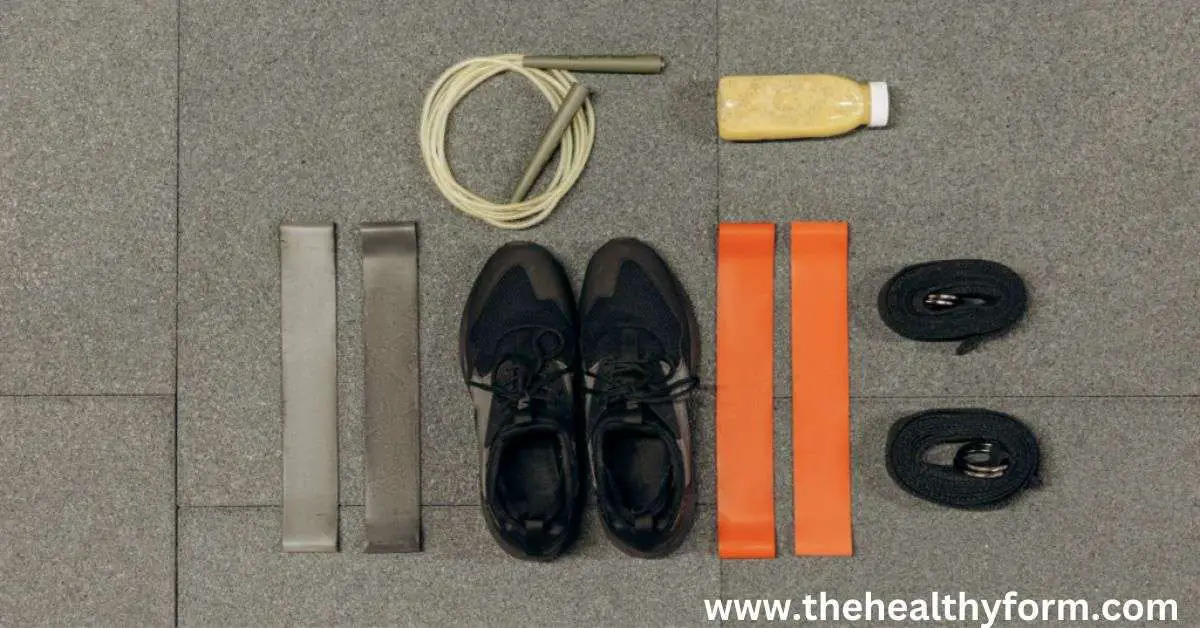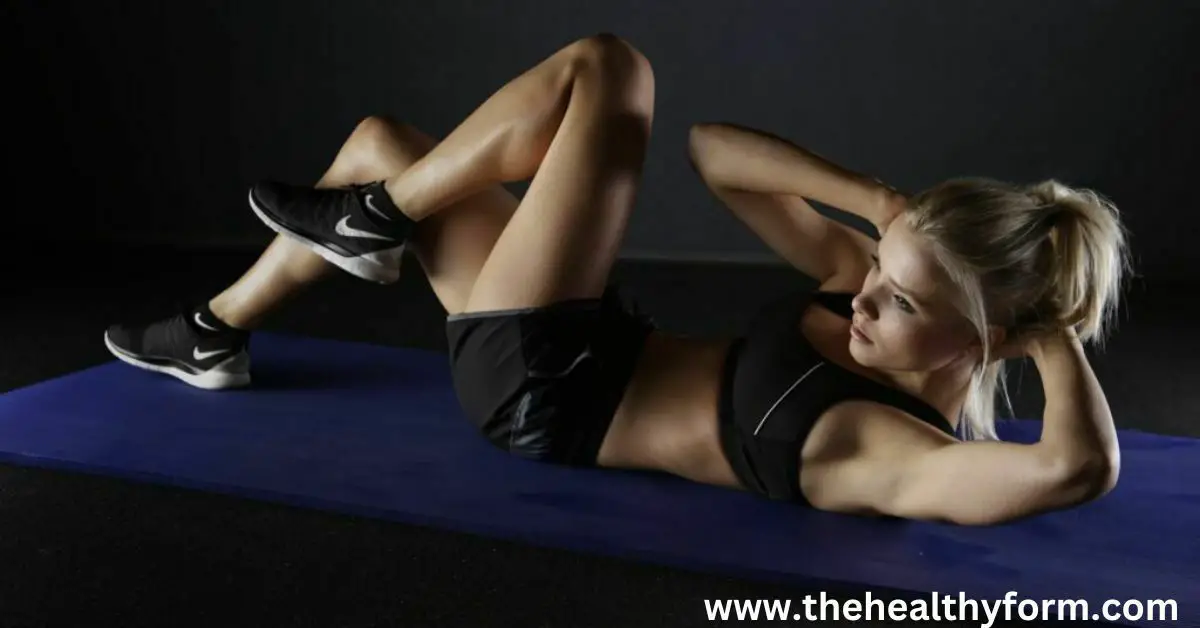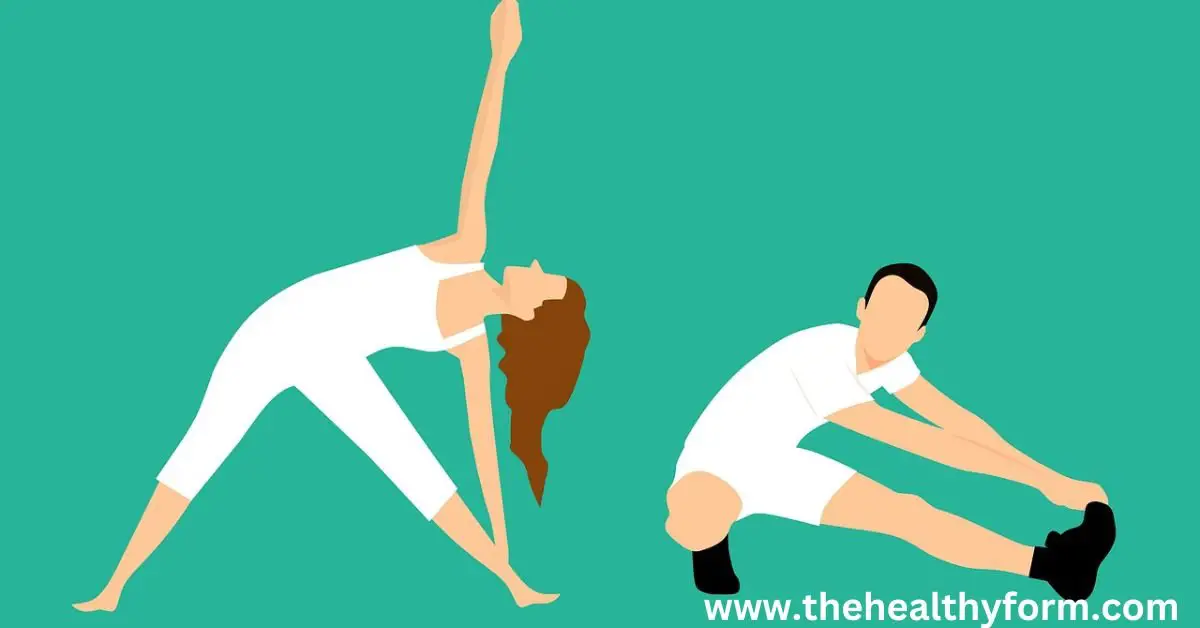The Importance of Stretching and Flexibility
Stretching and flexibility are important aspects of overall physical health and well-being. Whether you are an athlete, a yogi, or simply someone who enjoys being active, incorporating stretching and flexibility work into your routine can benefit you.
In this comprehensive guide, we will explore the benefits of stretching and flexibility, how to improve flexibility, the best stretches for increasing flexibility, how to incorporate stretching into your daily routine, stretching routines for runners, how to prevent injury through stretching and flexibility, and how to safely stretch without causing injury.
So, let’s dive in and discover the importance of stretching and flexibility!
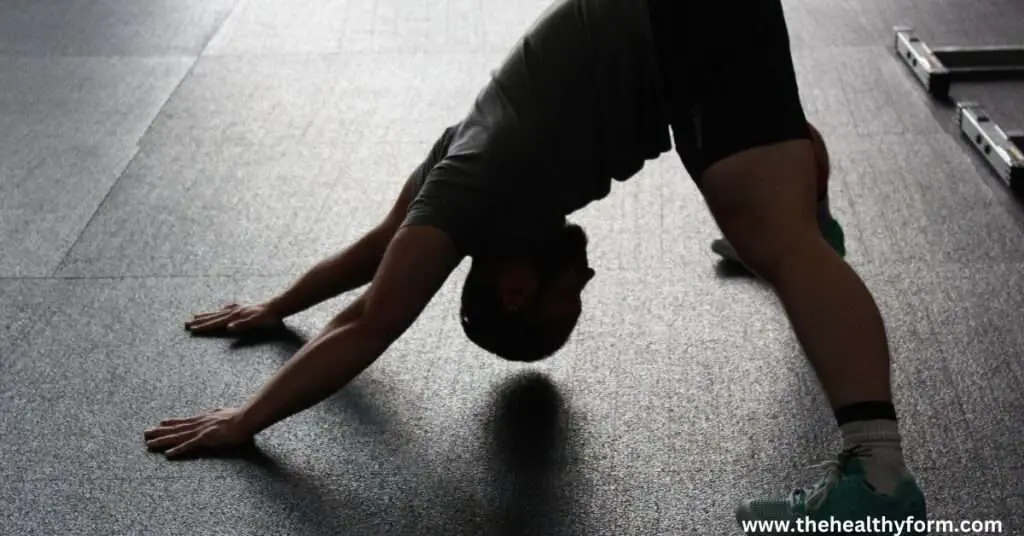
What are the Benefits of Stretching and Flexibility?
Regarding keeping our bodies in top-notch condition, stretching and maintaining flexibility are often underrated heroes. These simple yet powerful practices offer a plethora of benefits that go beyond just touching your toes. Let’s explore why incorporating stretching and flexibility exercises into your routine can be a game-changer for your overall well-being. Stretching and flexibility can have a range of benefits for physical health and wellness. Some of the benefits of stretching and flexibility include:
Enhancing Range of Motion
Imagine your body as a well-oiled machine. Regular stretching is the lubricant that keeps all the moving parts fluid and functional. It gradually increases your joints’ range of motion, allowing you to bend, twist, and turn more easily. Whether reaching for something on a high shelf or simply turning your head to check traffic while driving, improved flexibility ensures you do so comfortably and without strain.
Relieving Muscle Tension
Modern life often leads to muscle tension and tightness, especially if you spend long hours sitting at a desk or engaging in repetitive activities. Stretching gives those tight muscles a sweet sigh of relief. It helps release built-up tension, relaxing your muscles and contributing to relaxation and comfort. So, a few well-chosen stretches could be your remedy if you have a stiff neck after a day of work.
Reducing the Risk of Injury
Think of your muscles and tendons as elastic bands. When they’re well-stretched, they’re more pliable and less prone to sudden snaps or tears. This means that you’re essentially giving your body an insurance policy against injuries by incorporating regular stretching and flexibility exercises. Whether you’re an athlete or simply going about daily activities, a flexible body is less likely to suffer from strains or muscle pulls.
Improving Posture
In this digital age, slouching over screens has become the norm. The result? Poor posture can lead to a host of discomforts. Stretching the muscles that have become tight due to poor posture, like the chest and hip flexors, can help you stand tall and proud. Lengthening these muscles allows your body to assume a more aligned and balanced posture naturally.
Promoting Blood Circulation
Stretching isn’t just about your muscles; it’s also about improving blood circulation throughout your body. When you stretch, blood flow to your muscles increases, providing them with the oxygen and nutrients they need to function optimally. This enhanced circulation can improve energy levels and a sense of vitality.
Aiding Stress Relief
The mind and body are intricately connected, and the relaxation induced by stretching has a ripple effect on your mental state. Engaging in stretching exercises can trigger the release of endorphins – those wonderful feel-good hormones – which help reduce stress and anxiety. It’s like giving your mind a mini-vacation, even for a few minutes.
Incorporating Stretching into Your Routine
Incorporating stretching and flexibility exercises into your daily routine doesn’t require much effort, but the benefits are immense. Whether you dedicate a few minutes in the morning, take breaks during your workday, or make it a part of your evening wind-down, the consistent effort pays off. Remember, your body is your lifelong companion; nurturing its flexibility is an investment in your overall health and well-being.
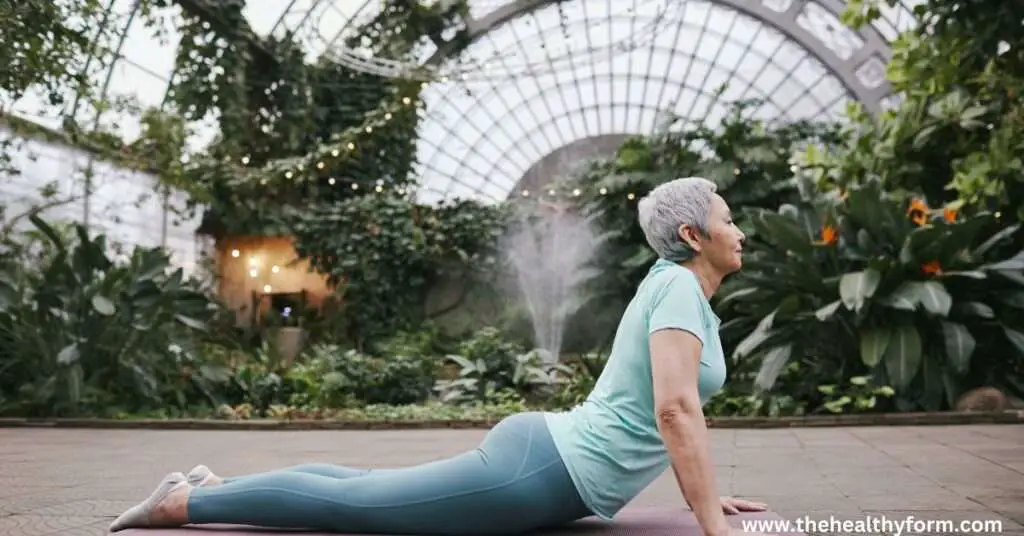
How Can I Improve My Flexibility?
Flexibility isn’t just for contortionists or gymnasts; it’s a vital component of overall health that anyone can work on. Whether aiming to touch your toes or wanting to move more freely, improving flexibility is within your reach. Let’s dive into some expert-backed tips to help you safely and effectively enhance your flexibility.
To improve flexibility, it’s important to regularly incorporate stretching into your routine and gradually increase the intensity and duration of your stretches over time. Here are a few other tips for improving flexibility:
Stretch Regularly but Mindfully
Stretching is the backbone of flexibility improvement. Incorporating regular stretching sessions into your routine can gradually increase your range of motion. However, the key is to stretch mindfully. Avoid pushing yourself to the point of pain; ease into stretches and hold them for around 15-30 seconds. Remember, patience is your ally.
Focus on Dynamic Stretching
Dynamic stretching involves moving parts of your body through their full range of motion. It’s a great way to strengthen your muscles before exercise and improve flexibility. Examples include leg swings, arm circles, and hip rotations. Dynamic stretches prepare your body for movement and can be a part of your pre-workout routine.
Incorporate Static Stretching Post-Workout
After your workout, your muscles are warm, making it an ideal time for static stretching. Static stretches involve holding a stretch in a comfortable position for an extended period. These stretches can help improve flexibility by gradually elongating muscles and increasing their pliability. Include stretches for all major muscle groups, holding each stretch for about 20-30 seconds.
Consider Yoga and Pilates
Yoga and Pilates are excellent disciplines to enhance flexibility. These practices focus on stretching and emphasize balance, stability, and mind-body connection. They offer a holistic approach to flexibility improvement, promoting relaxation and strength alongside increased range of motion.
Stay Consistent
Consistency is key when it comes to flexibility improvement. Dedicate a few minutes daily to stretching exercises, whether in the morning, during breaks, or before bedtime. Over time, these small efforts can accumulate, leading to noticeable improvements in your flexibility.
Hydrate and Nourish Your Body
Staying hydrated supports the health of your muscles and connective tissues, aiding in flexibility. Adequate nutrition also plays a role. Nutrients like vitamins C and D, as well as magnesium, support muscle health. A balanced diet fuels your body for improved flexibility and overall well-being.
Listen to Your Body
Flexibility improvement should never be painful. It’s important to listen to your body and respect its limits. Gradually challenging yourself is fine, but forcing a stretch can lead to injuries. If you feel discomfort or pain, ease off the stretch immediately.
Try Foam Rolling
Foam rolling, also known as self-myofascial release, involves using a foam roller to massage and release tension in muscles and fascia. It can enhance blood flow, increase tissue elasticity, and help improve flexibility. Incorporate foam rolling as part of your pre- or post-workout routine.
Relaxation Techniques
Tension in your mind can reflect tension in your body. Engaging in relaxation techniques like deep breathing, meditation, and even a warm bath can help relax your muscles, making them more receptive to stretching and flexibility exercises.
Celebrate Progress
Improving flexibility is a journey, and every small achievement deserves celebration. Don’t compare yourself to others; focus on your progress. Document your flexibility gains and use them as motivation to keep going.
What are the Best Stretching exercises for Increasing Flexibility?
Imagine moving through life with the grace and flexibility of a dancer. While not all of us are born with the innate flexibility of a contortionist, we can certainly enhance our range of motion through targeted stretching exercises. Whether you’re an athlete aiming to improve performance or simply seeking greater comfort in everyday movements, these stretching exercises can be your key to unlocking flexibility.
Hamstring Stretch: Touch Your Toes with Ease
Tight hamstrings can hinder your flexibility and cause discomfort. To ease into a hamstring stretch:
- How-to:
- Sit on the floor with your legs extended.
- Slowly reach towards your toes, keeping your back straight.
- Hold the stretch for 20-30 seconds, breathing deeply.
- Gently release and repeat 2-3 times.
Quadriceps Stretch: Kneel and Lengthen
Tight quads can affect your lower back and hinder movement. Here’s how to stretch them out:
- How-to:
- Kneel on the floor with your toes pointed back.
- Reach back and hold your ankles, pulling your heels towards your glutes.
- Maintain an upright posture and hold for 20-30 seconds.
- Release and switch sides; repeat 2-3 times on each leg.
Hip Flexor Stretch: Open Up Your Hips
Sitting for prolonged periods can lead to tight hip flexors. Loosen them up with this stretch:
- How-to:
- Begin in a lunge position with your right foot forward.
- Lower your left knee to the ground and push your hips forward.
- Keep your upper body upright and hold for 20-30 seconds.
- Repeat on the other side; aim for 2-3 stretches per leg.
**4. Chest Opener: Improve Posture and Flexibility
Hunching over a desk can affect your posture and flexibility. Counteract this with a chest opener:
- How-to:
- Stand tall with your feet hip-width apart.
- Clasp your hands behind your back and gently lift your arms.
- Feel the stretch across your chest and shoulders.
- Hold for 20-30 seconds, then release.
Cat-Cow Stretch: Mobilize Your Spine
Flexibility isn’t just about legs; your spine matters, too. The cat-cow stretch is perfect for spine mobility:
- How-to:
- Begin on all fours with your wrists under your shoulders and knees under your hips.
- Arch your back towards the ceiling (cat pose) while tucking your chin.
- Slowly transition to cow pose by dropping your belly and lifting your head.
- Move fluidly between cat and cow, focusing on your breath.
Child’s Pose: Relax and Stretch
End your stretching routine with a soothing child’s pose, a vital stretch for your lower back:
- How-to:
- Start on your hands and knees.
- Sit back on your heels and extend your arms forward.
- Let your forehead rest on the mat, and take deep breaths.
- Hold the pose for 30 seconds to 1 minute, feeling the gentle stretch.
Remember, consistency is key. Incorporate these stretches into your routine weekly to improve flexibility gradually. Always warm up before stretching, and listen to your body – stretching should feel like a comfortable pull, not pain. With patience and practice, you’ll be amazed at how your body responds, moving with greater freedom and flexibility in no time.
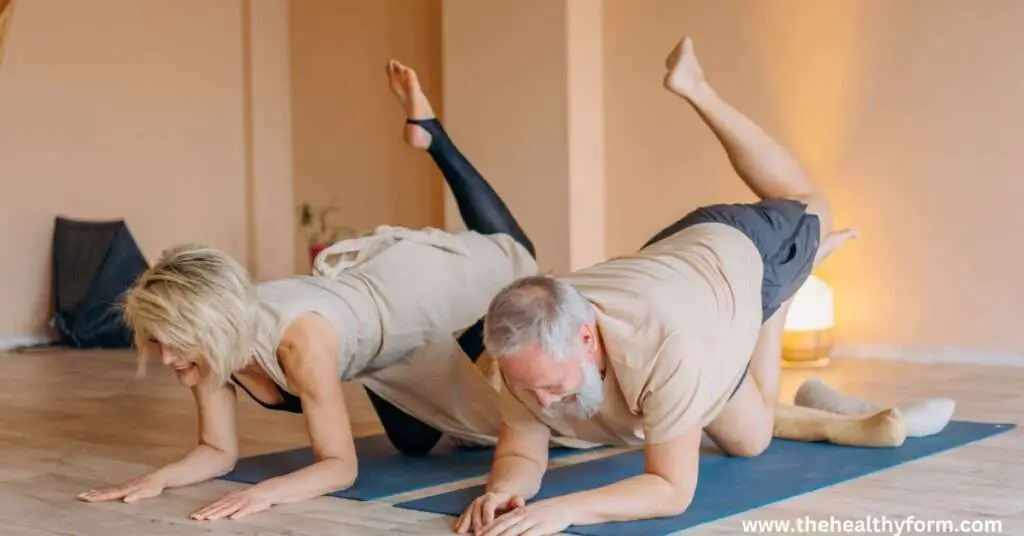
How Can I Incorporate Stretching into My Daily Routine?
Incorporating stretching into your daily routine can be as simple as setting aside a few minutes daily to stretch. Here are a few tips for incorporating stretching into your daily routine:
- Set aside a specific time for stretching: Choose a time that works best for you and make stretching a part of your daily routine at that time.
- Stretch after a workout: Stretching after a workout can help to reduce muscle soreness and improve recovery.
- Use a foam roller: Foam rolling can be a great way to stretch and release muscle tension.
- Try yoga or Pilates: Incorporating yoga or Pilates into your routine can greatly improve flexibility and overall body awareness.
- Use stretching to relax: Stretching can be a great way to relax and unwind after a long day.
What are the Best Stretching Routines for Runners?
Runners can benefit from incorporating specific stretches into their routines to help improve flexibility and reduce the risk of injury. Some of the best stretches for runners include:
- Quadricep stretch: Stand with your feet hip-width apart to stretch the quadriceps and grab one ankle with the same hand. Gently pull your ankle towards your buttock to feel a stretch in the front of your thigh.
- Hamstring stretch: To stretch the hamstrings, sit on the ground with your legs extended in front of you. Reach towards your toes to feel a stretch in the back of your thighs.
- Calf stretch: To stretch the calves, stand facing a wall and place one foot behind you, with your heel on the ground and your toes pointed towards the wall. Lean into the wall to feel a stretch in the calf of the back leg.
- Hip flexor stretch: To stretch the hip flexors, start in a lunge position with one leg forward and one leg back. Slowly lower your back knee toward the ground to feel a stretch in the front of your hip.
IT band stretch: To stretch the IT band, stand facing a wall and place one hand on it for balance. Cross your right leg over your left leg and gently press your right hip towards the left to feel a stretch along the outside of your right leg.
How Can I Prevent Injury Through Stretching and Flexibility?
Stretching and flexibility work can help prevent injury by improving the range of motion, reducing muscle tension, and improving overall muscle function. Here are a few tips for preventing injury through stretching and flexibility:
- Stretch regularly: Incorporating stretching into your routine can help improve flexibility and reduce the risk of injury.
- Use proper form: It’s important to use proper form when stretching to avoid injury. If you are unsure of the correct form for a stretch, seek guidance from a personal trainer or coach.
- Gradually increase intensity and duration: Don’t push yourself too hard too quickly. Gradually increase the intensity and duration of your stretches over time to avoid injury.
- Warm up before stretching: Warming up before stretching can help to increase blood flow to the muscles and reduce the risk of injury.
- Cool down after exercise: Cooling down with gentle stretches can help improve recovery and reduce the risk of injury.
How Can I Safely Stretch Without Causing Injury?
Stretching can be a great way to improve flexibility and reduce the risk of injury, but it’s important to stretch safely to avoid causing injury. Here are a few tips for safely stretching:
- Use proper form: Proper form is essential for safely stretching. If you are unsure of the correct form for a stretch, seek guidance from a personal trainer or coach.
- Please don’t push yourself too hard: Listening to your body and stretching to mild discomfort is important. Pushing yourself too hard can lead to injury.
- Please don’t hold your breath: It’s important to breathe normally while stretching to avoid causing tension in the body.
- Don’t bounce: Bouncing while stretching can cause muscle strain and lead to injury. Instead, hold stretches for a few seconds and then release.
FAQs about the Importance of Stretching
Here are some of the most frequently asked questions about stretching and flexibility.
What is stretching?
Stretching is a type of physical activity involving elongating muscles and other soft tissues to improve flexibility, mobility, and range of motion.
Why is stretching important?
Stretching is important because it can help improve flexibility, reduce the risk of injury, improve athletic performance, and promote overall physical health.
When should I stretch?
Stretching can be done anytime, but it’s most effective after warming up the body with some light activity. Stretching after exercise is also a good idea to help cool down the body.
How long should I stretch for?
The amount of time you should stretch will depend on your needs and goals. In general, it’s recommended that adults spend at least 10 minutes stretching per day.
What are some different types of stretching?
There are several types of stretching, including static, dynamic, PNF, and ballistic. Each type has its benefits and drawbacks.
Conclusion
Stretching and flexibility are important aspects of overall physical health and wellness. Incorporating stretching and flexibility work into your routine can have many benefits, including improved range of motion, better posture, reduced muscle tension, improved blood flow, and stress relief. To improve flexibility, it’s important to stretch regularly and gradually increase the intensity and duration of your stretches over time. Some of the best stretches for increasing flexibility include the forward fold, seated forward fold, downward facing dog, pigeon pose, and low lunge. Incorporating stretching into your daily routine can be as simple as setting aside a few minutes daily to stretch. Many options are available, such as yoga, Pilates, foam rolling, and static stretches.
Runners can benefit from incorporating specific stretches into their routine to help improve flexibility and reduce the risk of injury, such as the quadriceps, hamstring stretch, calf stretch, hip flexor stretch, and IT band stretch. To prevent injury through stretching and flexibility, it’s important to stretch regularly, use proper form, gradually increase intensity and duration, warm up before stretching, and cool down after exercise. To safely stretch without causing injury, it’s important to use proper form, listen to your body, breathe normally, and avoid bouncing while stretching. By following these tips, you can effectively incorporate stretching and flexibility work into your routine and enjoy its many benefits.


